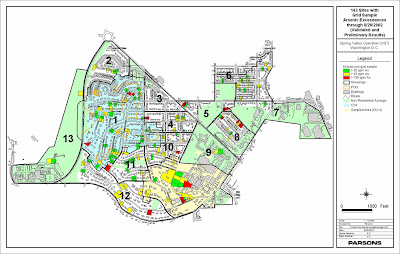.jpg) The U.S. Army Corps of Engineers abruptly stopped its chemical munitions dig at a Spring Valley home on Monday after unearthing an artillery shell that may be both explosive and armed with a deadly chemical ... An Army Corps official said Tuesday that the discovery of the shell, which occurred on November 19, could force the Corps to revise its safety plan for the neighborhood.
The U.S. Army Corps of Engineers abruptly stopped its chemical munitions dig at a Spring Valley home on Monday after unearthing an artillery shell that may be both explosive and armed with a deadly chemical ... An Army Corps official said Tuesday that the discovery of the shell, which occurred on November 19, could force the Corps to revise its safety plan for the neighborhood.The Northwest Current (December 12, 2007: pg. 1)
.jpg)































.jpg)


b.jpg)


